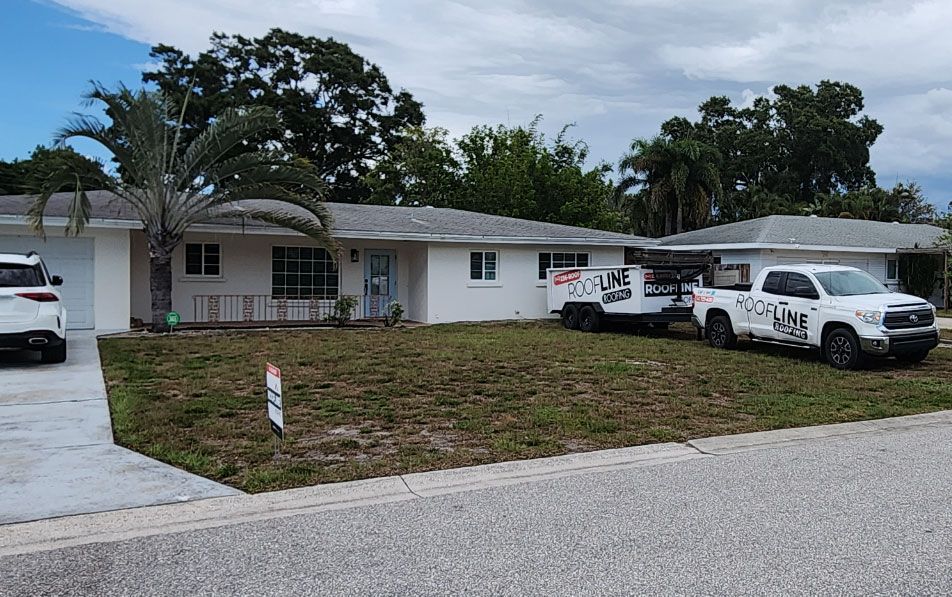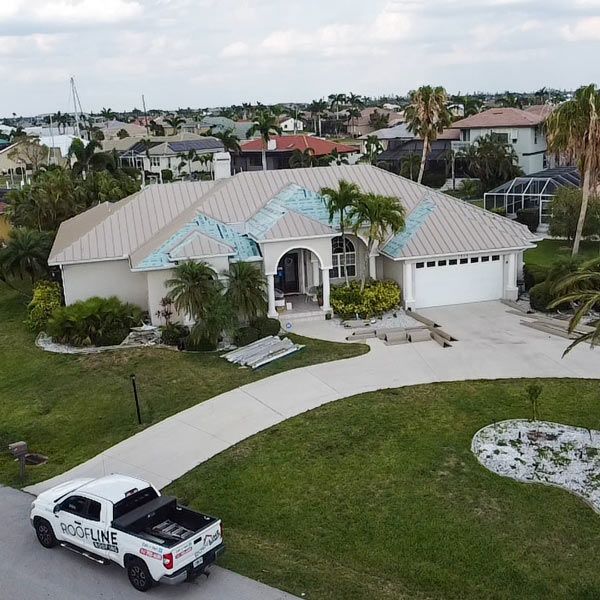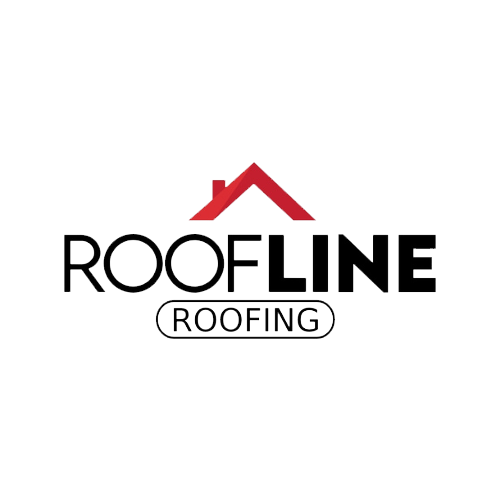
In storm-prone areas like Bradenton, ensuring your roof’s resilience is imperative for safeguarding your property. This guide delves into crucial aspects of identifying storm-related roof damage and outlines comprehensive steps that homeowners and property managers can take to protect their investments. By recognizing early signs of damage and documenting them meticulously, you can streamline the insurance claims process and potentially save significant repair costs.
An informed approach to storm damage assessment not only involves keen observation but also benefits from professional insight. Detailed inspections, both DIY and expert-led, play significant roles in detecting vulnerabilities that could go unseen. This introduction aims to empower you with the knowledge to execute effective evaluations and documentation, laying the groundwork for informed decisions about necessary repairs and long-term maintenance strategies in areas like Bradenton and Palmetto.
Damage Indicators: What to Check Immediately Post-Storm
Storms often leave in their wake a trail of damage that could wreak havoc on your roof if left unchecked. For homeowners and property managers in Bradenton, spotting early signs of storm roof damage is crucial to saving time, money, and preventing further harm. Understanding what to look for helps address issues before they develop into extensive repairs.
One of the first areas to examine after a storm is the condition of shingles. A study by the Insurance Institute for Business & Home Safety emphasizes that missing, cracked, or curled shingles often signify wind damage. High winds can rip shingles from your roof, exposing the underlayment and roof deck to the elements. This exposure can lead to leaks and water damage if not addressed promptly.
Look out for granules in your gutters. Asphalt shingles shed granules naturally over time, but if a large amount appears post-storm, it signals damage from hail or strong winds. Granules provide a protective layer against UV rays and increasing granule loss can accelerate shingle deterioration. This warrants further inspection for potential hail damage, which can cause dimples or pockmarks often overlooked by the untrained eye.
Inspect flashing and seals around vent pipes, skylights, and chimneys, as these areas are particularly susceptible to storm damage. According to the National Roofing Contractors Association, damaged flashing and seals are common sites for leaks. A simple visual check can identify lifted or bent metal flashing or cracked sealant which could compromise roof integrity.
Examine gutters and downspouts for dents, as their presence indicates hail impact and damage to the roof’s surface. Additionally, verify that downspouts aren’t clogged with debris, as this can indicate a rooftop problem that, if left ignored, may result in water accumulation and leaks.
Assess the attic space for signs of water infiltration, such as wet insulation, puddles, or water stains on the ceiling. This Interior evidence, as highlighted by the Federal Emergency Management Agency, often provides the earliest indicators of roof damage. A flashlight is handy for spotting these less visible signs, especially against a dark background of attic plywood sheeting.
Trees and large branches often cause damage during storms; check for broken branches on the roof. Even if the limbs appear minor in size, they can cause significant harm over time by dislodging shingles or creating gaps where water may seep through. If debris is found, inspect for further roof impact and consult with professionals if uncertain.
Mold or mildew odors wafting from the attic or top floors shouldn’t be ignored. The Environmental Protection Agency reports that persistent mold signals lingering moisture issues, which could originate from compromised roofing. Mold not only damages your property but also poses health risks, making timely inspection a priority.
For commercial properties, extreme weather also dictates a need for regular inspection, particularly focusing on flat roofs which are common in such settings. Look for loose materials or gaps along the edges of the roof membrane. Standing water pools should be reported, as they indicate drainage blockages or low spots needing adjustment.
Consider enlisting a professional for a comprehensive inspection if uncertain about the potential damage severity. Specialized technology, such as thermal imaging, enables professionals to spot moisture under roofing materials invisible to the naked eye. This insight helps prevent issues from becoming large-scale problems requiring costly interventions.
In Bradenton’s unique climate, regular post-storm roof inspections aren’t optional but a crucial part of maintaining the structural integrity and value of your property. Knowing these key indicators of storm roof damage empowers property owners and managers to take preventive actions, ultimately safeguarding their investments. Frequent checks and timely repairs extend roof life and prevent small issues from ballooning into significant repairs.
Documentation Tips: Recording Damage for Insurance Claims
Documenting roof damage after a storm is vital for a successful insurance claim in Sarasota. Starting with clear evidence can simplify the process and ensure nothing is overlooked. There’s a methodical approach to capturing the details required by insurers, and doing it correctly can often mean the difference between a smooth claim process and frustrating delays.
Photographic evidence forms the foundation of roof damage documentation. Begin by snapping photos of the roof’s overall condition before zeroing in on specific damages. Close-up photos of missing or damaged shingles, ripped flashing, or dents caused by hail are especially useful. Capture different angles to provide a comprehensive view, as insurers often require this visual documentation to validate claims.
Organize the photos by annotating each one. Describe what the image depicts, such as “rusty nails around the chimney” or “dented aluminum flashing above the kitchen area.” Adding a simple label or note with the date and time can further validate the timeline of the damage occurrence, which helps justify the cause as being related to a storm.
Keeping a detailed log or report alongside your photographic evidence strengthens your documentation. Start a damage diary on the day of the storm, noting the date, time, and specifics about the storm’s impact on your property. Record when the damage was first noticed, detailing observations such as water stains or granules in the gutter. This written log provides a narrative that can help adjusters understand the progression and severity of the damage.
Video evidence is another valuable tool for documenting roof damage. Videos allow you to narrate and point out damages, guiding the viewer through what can often be a confusing scene of debris and destruction. Walk around the property, ensuring you cover all sides and any outbuildings potentially affected. Narration should emphasize the key areas, describing any displacement or missing components observable from ground level.
Remember, documentation extends beyond visible roof damage. Check indoor spaces for water intrusion, which should also be documented thoroughly. Photographs and videos of water stains on walls, ceilings, and attic spaces help pinpoint the roof’s failing points. Likewise, document any water-damaged insulation or mold growth, which suggests ongoing moisture problems from a compromised roof.
Equally important is preserving any damaged items directly affected by a leaky roof. Waterlogged materials such as furniture or personal belongings bolster your claim by showing secondary damage from roof failure. Include receipts or appraisals for these items if possible, establishing their value before the damage occurred.
For paper documentation, keep printed copies of all collected material and any communication with your insurance provider. Maintain an organized folder containing hard copies of your records — both physical and electronic — to ensure nothing is lost in the shuffle of claim processing.
As you gather and organize your documentation, it may be valuable to consult a roofing professional. An inspection report from a licensed roofer can detail the technical aspects of the damage, providing an expert’s insights into what repairs are necessary and their costs. Hiring those familiar with Sarasota’s typical storm damage characteristics offers an added layer of expertise that can strengthen your claim resolution.
Consider reaching out to your insurance provider or an claims adjuster early in the process. They can advise on any specific documentation requirements or formats their company prefers, which aids in meeting their standards efficiently. While it’s tempting to rush through documentation in the aftermath of a storm, taking the time to methodically and accurately compile this evidence is crucial. It not only assists in processing claims smoothly but also ensures that you receive the appropriate coverage for all damages sustained. Remember, though time-consuming, proper documentation is a necessity, not merely a helpful step in recovering from a storm’s impact.
Next Steps: Professional Assessment and Repair Planning
After documenting storm damage to your roof, the logical next step is to seek a professional assessment. While DIY evaluations are useful for initial insight, only a roofing expert can fully diagnose the extent of needed repairs and provide a precise estimate. This holds especially true for complex structures and commercial properties, such as those in Palmetto, where roof repair planning is critical.
Qualified roofing contractors bring specialized skills and equipment to the table. Their comprehensive inspections go beyond surface damage, employing tools like thermal imaging to detect hidden moisture and underlying structural issues. This level of detail ensures that no potential problems are missed, helping to prevent future complications that could escalate repair costs.
Involving a licensed professional not only identifies problems but also informs your roof repair planning in Palmetto. Reliable contractors provide detailed reports which outline the specific damage, recommended repairs, and associated costs. This documentation is crucial for building a transparent repair plan, helping property managers and homeowners make informed decisions about material selection, repair priorities, and potential insurance claim submissions.
The choice of materials in your repair plan should reflect local environmental conditions. For instance, in Palmetto, where the climate can be humid and stormy, materials like metal or high-quality asphalt shingles often perform better due to their durability and weather resistance. Discuss these options with your contractor to ensure your repair investments offer long-term benefits.
Developing a timeline is another important aspect of repair planning. A structured schedule helps manage expectations and reduces disruption to property operations. Work with your contractor to prioritize tasks; addressing structural repairs first, followed by aesthetic improvements like repainting or resealing. This phased approach ensures that essential functionality and protection are restored swiftly, while cosmetic finishes can be undertaken subsequently.
Understanding labor requirements is essential for effective repair scheduling. Commercial roofs might require specialized crews to tackle extensive repairs, while smaller residential projects usually need fewer personnel. Open communication with your contractor helps ascertain the necessary workforce, targets efficient project execution, and mitigates any logistical challenges.
Budget planning rounds off your repair plan. Seek clarity from your contractor about potential cost variations, such as unforeseen damages uncovered during the repair process or material price fluctuations. Prepare a 10-15% contingency fund in your budget to accommodate these variables, reducing the likelihood of financial stress if expenses exceed initial projections.
Engaging a professional roofing company also aids in compliance with local building regulations. Roofing projects often require permits, and licensed contractors are well-versed in navigating bureaucratic requirements. They ensure that both residential and commercial reroofing projects adhere to Palmetto’s building codes, avoiding legal complications and potential fines.
Consider setting up a maintenance agreement post-repair to prolong your roof’s lifespan. Scheduled inspections and minor repairs can be planned several times a year, addressing minor wear before it worsens. With the unpredictable weather patterns in South Florida, proactive maintenance becomes a valuable investment, safeguarding your property against future storms and ensuring that past investments in roof repair are preserved.
You might be asking
How can I safely assess roof damage after a storm?
To safely assess roof damage, start by inspecting your roof from the ground using binoculars. Look for missing shingles, debris, or any noticeable damage. Avoid climbing onto the roof yourself as it’s risky after a storm. Instead, consider hiring a professional roofing contractor for a thorough and safe inspection.
What are the most common types of storm-related roof damage?
Common types of storm-related roof damage include missing or broken shingles, leaks, dents from hail, and damage from fallen branches. High winds can lift shingles or create gaps, while heavy rain may cause water intrusion leading to leaks.
Should I file an insurance claim for minor roof damage?
Filing an insurance claim for minor roof damage depends on the extent of the damage and your policy deductible. It’s advisable to get a professional opinion on the damage’s severity. If repair costs exceed your deductible or impact your roof’s function, it may be worth filing a claim.
Next Steps
Taking the right steps after storm-related roof damage ensures your property remains safe and secure. Begin with professional assessments that offer a thorough understanding of the issues at hand, moving towards selecting the most fitting repair materials and a solid timeline. This process primes you to make choices that are both financially sound and protective of your property.
As you weigh your repair options, consider reaching out to qualified professionals like those at Roofline Roofing. Their expertise in South Florida’s climatic challenges can guide you in selecting lasting solutions tailored to your needs. Contact Roofline Roofing today for a free consultation to discuss your goals and explore how they can assist in fortifying your roof against future storms.
Contact Us
Use the form below to contact us or to schedule a free consultation.
I would highly recommend Roofline Roofing for any roofing needs. As a fellow business owner, their professionalism and efficiency stood out. They provided quality service, completed the job on time, and their pricing was fair. Very satisfied with their work!
-- Logan L.






